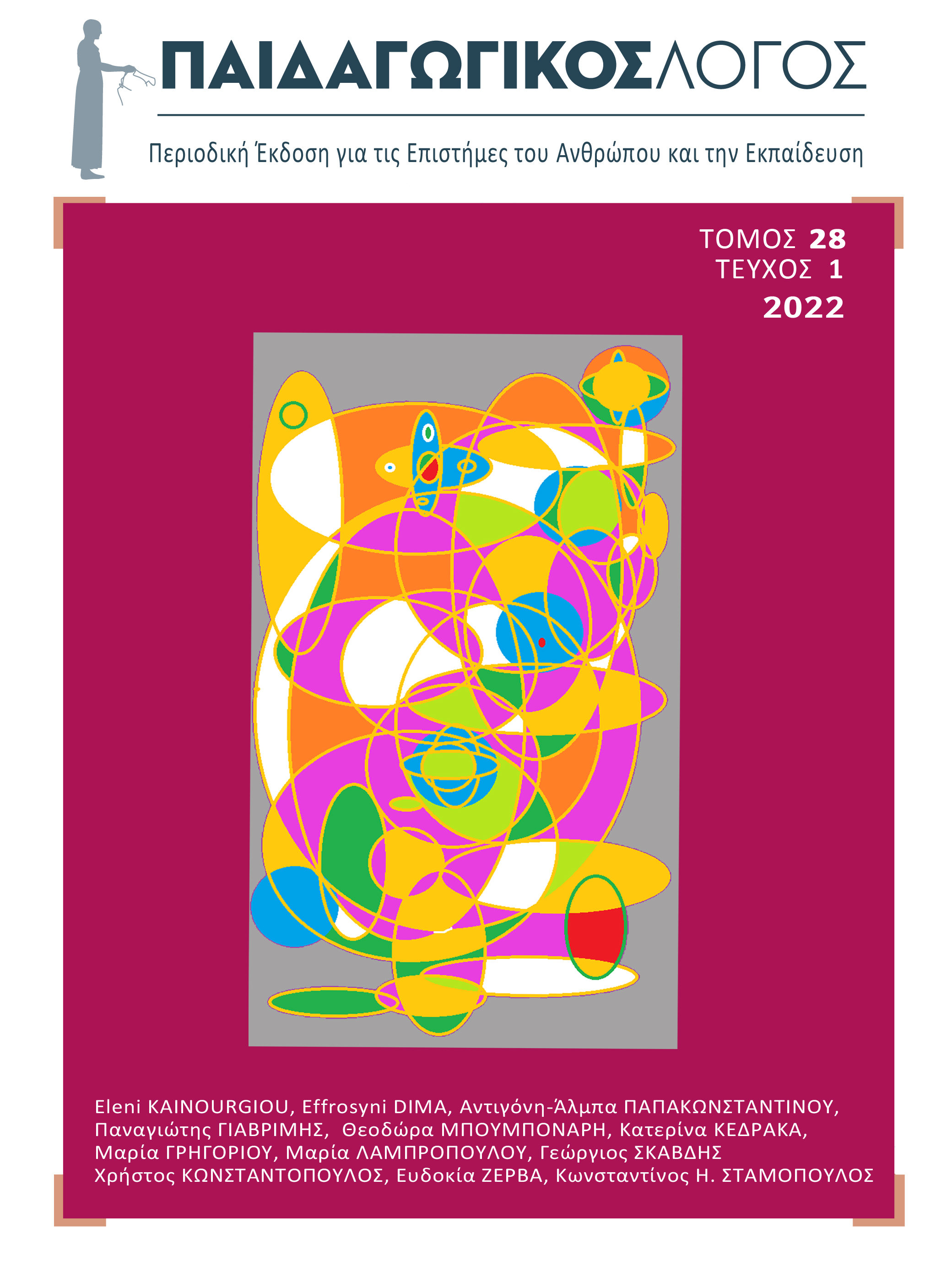Αξιοποίηση του διδακτικού μοντ΄έλου της ανεστραμμένης τάξης στη διδασκαλία των βιοεπιστημών στην τριτοβάθμια εκπαίδευση

Περίληψη
Η ανεστραμμένη τάξη αναδεικνύεται σε ένα πολύ ενδιαφέρον πεδίο επιστημονικής έρευνας, ωστόσο, στην Τριτοβάθμια Εκπαίδευση, η μετωπική διδασκαλία στις πανεπιστημιακές αίθουσες, είναι ακόμη η κυρίαρχη μέθοδος διδασκαλίας. Στόχος της παρούσας έρευνας είναι να αναδείξει τα πλεονεκτήματα και μειονεκτήματα της εφαρμογής του μοντέλου της ανεστραμμένης τάξης στην Τριτοβάθμια Εκπαίδευση. Για την αξιολόγηση της εφαρμογής της ανεστραμμένης τάξης από τους φοιτητές αξιοποιήθηκε ερωτηματολόγιο, το οποίο διανεμήθηκε ηλεκτρονικά στους φοιτητές μετά το τέλος των δια ζώσης μαθημάτων, στο εαρινό εξάμηνο 2021-22. Από τα αποτελέσματα προέκυψε ότι οι φοιτητές της παρούσας έρευνας έκριναν θετική την εφαρμογή του μοντέλου, αξιολογώντας υψηλά τόσο τις δραστηριότητες πριν την τάξη, δηλώνοντας ότι τους επέτρεψαν να μάθουν καλύτερα το νέο αντικείμενο στο δικό τους ρυθμό, όσο και τις δραστηριότητες στην τάξη, καθώς αυτές συνέβαλαν στην έμπρακτη εφαρμογή της νέας γνώσης και στην αλληλεπίδραση με τους συμφοιτητές τους αλλά και τον εκπαιδευτικό, γεγονός που συνέβαλε σημαντικά στη βαθύτερη κατανόηση του αντικειμένου. Παρόλα αυτά δεν είναι έτοιμοι να μπουν σε ένα σύστημα πλήρους εφαρμογής του μοντέλου αυτού, καθώς προτιμούν τις δια ζώσης διαλέξεις, υποδηλώνοντας ότι δεν είναι έτοιμοι να αναλάβουν σε ικανοποιητικό βαθμό την ευθύνη της προσωπικής τους μελέτης μόνοι στο σπίτι και έχουν ανάγκη την αλληλεπίδραση με τον διδάσκοντα. Συμπερασματικά, το μοντέλο της ανεστραμμένης τάξης θα μπορούσε να αξιοποιηθεί για να μειώσει σημαντικά τη χρήση της παραδοσιακής διάλεξης, να υπερβεί πολλούς από τους περιορισμούς των παραδοσιακών προσεγγίσεων της πανεπιστημιακής διδασκαλίας και μάθησης και εν τέλει να υπηρετήσει την προσέγγιση της μαθητοκεντρικής μάθησης.
Λεπτομέρειες άρθρου
- Πώς να δημιουργήσετε Αναφορές
-
Μπουμπόναρη Θ., Κεδράκα Κ., Γρηγορίου M., Λαμπροπούλου Μ., Σκάβδης Γ., & Κωνσταντόπουλος Χ. (2022). Αξιοποίηση του διδακτικού μοντ΄έλου της ανεστραμμένης τάξης στη διδασκαλία των βιοεπιστημών στην τριτοβάθμια εκπαίδευση. Παιδαγωγικός Λόγος, 28(1), 79–99. https://doi.org/10.12681/plogos.31610
- Ενότητα
- Articles

Αυτή η εργασία είναι αδειοδοτημένη υπό το CC Αναφορά Δημιουργού – Μη Εμπορική Χρήση – Όχι Παράγωγα Έργα 4.0 4.0.
Οι Συγγραφείς που δημοσιεύουν εργασίες τους σε αυτό το περιοδικό συμφωνούν στους παρακάτω όρους:
- Οι Συγγραφείς διατηρούν τα Πνευματικά Δικαιώματα και χορηγούν στο περιοδικό το δικαίωμα της πρώτης δημοσίευσης, ενώ ταυτόχρονα τα πνευματικά δικαιώματα της εργασίας προστατεύονται σύμφωνα με την χρήση άδειας που υιοθετεί ο «Παιδαγωγικός Λόγος - Περιοδική Έκδοση για τις Επιστήμες του Ανθρώπου και την Εκπαίδευση» : Αναφορά Δημιουργού – Μη Εμπορική Χρήση – Όχι Παράγωγα Έργα 4.0 (CC BY-NC-ND). Αυτή η άδεια επιτρέπει στους άλλους να έχουν πρόσβαση στο έργο και να το μοιράζονται με άλλους, εφόσον κάνουν αναφορά σε αυτό, ωστόσο δεν μπορούν να το αλλάξουν με κανένα τρόπο ούτε να το χρησιμοποιούν για εμπορική χρήση.
- Οι συγγραφείς μπορούν να συνάπτουν ξεχωριστές και πρόσθετες συμβάσεις και συμφωνίες για τη μη αποκλειστική διανομή της εργασίας, όπως δημοσιεύτηκε στο περιοδικό αυτό (π.χ. κατάθεση σε ένα ακαδημαϊκό καταθετήριο ή δημοσίευση σε ένα βιβλίο), με την προϋπόθεση της αναγνώρισης και την αναφοράς της πρώτης δημοσίευσης σε αυτό το περιοδικό.
- Το περιοδικό επιτρέπει και ενθαρρύνει τους συγγραφείς να καταθέτουν τις εργασίες τους μέσω διαδικτύου (π.χ. σε ένα ακαδημαϊκό καταθετήριο ή στους προσωπικές τους ιστοσελίδες) πριν και μετά από τις διαδικασίες της δημοσίευσης, καθώς αυτό μπορεί να οδηγήσει σε παραγωγική ανταλλαγή ιδεών και σκέψεων, καθώς επίσης και σε γρηγορότερη και μεγαλύτερη χρήση και ευρετηρίαση της δημοσιευμένης εργασίας


